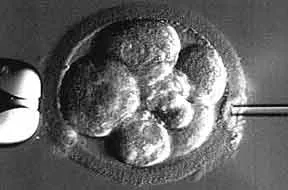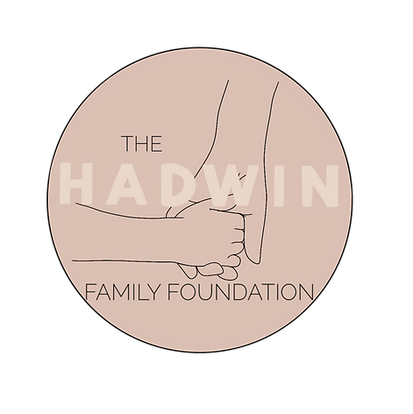Assisted Embryo Hatching
Published: 12/11/2015
During the initial stages of development, your embryo is contained in a "shell" or layer of proteins called the zona pellucida. The zona pellucida is designed to protect the embryo until it reaches the blastocyst stage of development. To successfully implant into the uterine lining, the embryo needs to "hatch out" of this zona pellucida and attach to the walls of the uterus.
In certain situations, the zona pellucida is abnormally thick and/or hardened, which may make it difficult or impossible for an otherwise normal embryo to hatch from the zona pellucida at implantation. This condition comprises the ability of the embryo to implant in the uterine wall.
This situation is improved with Assisted Zona Hatching (AH), a procedure that produces a microscopic hole in the zona pellucida using micromanipulation techniques. During assisted embryo hatching, any lysed or dead cells are also removed from the embryo (lysed cell removal or LCR). The literature suggests that these dead or lysed cells may be toxic to the embryo, and their removal improves implantation and pregnancy rates.
Although assisted embryo hatching can be done on fresh embryos, the current literature does not show improved implantation and pregnancy rates with routinely assisted hatching, except in very specific situations like advanced maternal age which increases the possibility that the embryo wall can be hardened. Although the embryo itself is fine, FSH levels are elevated after failed attempts at prior fresh in vitro fertilization cycles.
The literature does support, however, improved implantation and pregnancy rates when assisted hatching and removal of lysed cells are used on cryopreserved embryos that are transferred on day 3. Cryopreservation may artificially harden the embryo wall. Our team at Arizona Center for Fertility Studies recommends that AH be done on all frozen embryo transfers.
To date, there appear to be no adverse effects of assisted hatching on the embryo and the future offspring. To date, Arizona Center for Fertility Studies embryology laboratory has not injured a single embryo doing assisted hatching.
Criteria for Recommending Assisted Hatching (AH)
- Maternal age of 38 or older
- Previously unsuccessful IVF embryo transfer
- Frozen-thawed embryos for transfer
How is Assisted Hatching Performed?
- The embryo is held with a specialized holding pipette (on the left).
- A very delicate, hollow needle is used to expel a mild acid solution against the outer "shell" (zona pellucida) of the embryo (on the right).
- A small microscopic hole is made in the shell by digesting it with the acid solution.
- The embryo is then washed and put back in culture in the incubator.
- The embryo transfer procedure is done shortly after the hatching procedure.

Picture of the micropipette, on the right, making a small hole in the zona pellucida (or wall) of a day 3 embryo.
Laser-Assisted Hatching
The advent of the laser has allowed the development of precision techniques to manipulate embryos for enhanced fertility. Laser-assisted hatching (LAH) can potentially enhance implantation/pregnancy rates or turn around a history of embryos failing to implant themselves in the uterine wall. Our team at Arizona Center for Fertility Studies strongly believes that laser technology is a state-of-the-art technology for any embryos that undergo AH, embryo biopsy for chromosome abnormality/single-gene mutations or gender or sex selection, and before transferring cryopreserved or frozen embryos (FET).
Assisted-laser hatching (LAH) is used to help the embryo hatch from its protective outer shell, the zona pellucida, and promote implantation in the uterine wall after embryo transfer. LAH uses a highly focused infrared laser beam to remove a very small section of the zona pellucida, or outer wall of an embryo, in very precise increments. Before the clinical availability of laser-assisted hatching, only mechanical or chemical methods (acid) could be used for assisted hatching of human embryos in clinical settings. Laser-assisted hatching requires less handling of the embryo than these other assisted hatching methods. Also, laser-assisted hatching is faster than the other methods and, therefore, the embryo spends less time outside the incubator.
Arizona Center for Fertility Studies strongly feels that LAH improves the success rates of implantation and subsequently in vitro fertilization; therefore, all embryos transferred at ACFS, undergo AH with the laser.
Since Arizona Center for Fertility Studies only does day 5/6 blastocyst transfers, all blastocysts that are transferred will undergo laser-assisted hatching. Since cryopreservation may artificially harden the wall (zona pellucida) of the embryo, all thawed embryos also undergo laser-assisted hatching prior to transfer.

Picture of a day 3 eight-cell embryo about to undergo laser-assisted hatching (arrow, round marker, indicates where the laser beam will penetrate the zona pellucida).
Risks Associated with Assisted Hatching
Unfortunately, there are some risks associated with Assisted Hatching/Lysed Cell Removal: It is possible to damage embryos with hatching and lower the pregnancy rate. Therefore, it is essential that if assisted hatching is done, it must be performed by properly trained embryologists.
There is also some evidence to suggest assisted hatching may increase the risk of identical twins.
Rare complications include complications to the fetus, physical deformity, and conjoined twins. The actual pregnancy and live birth rates seen in an individual in vitro fertilization (IVF) center will vary according to the hatching technique used, the overall quality of the embryology laboratory, the experience and expertise of the individual performing the hatching, the embryo transfer skills of the physician, and other factors.
The current data shows that there appear to be no adverse effects of AH on pregnancy rates and future offspring. To date, Arizona Center for Fertility Studies embryology laboratory has not injured or lost a single embryo doing assisted hatching.











